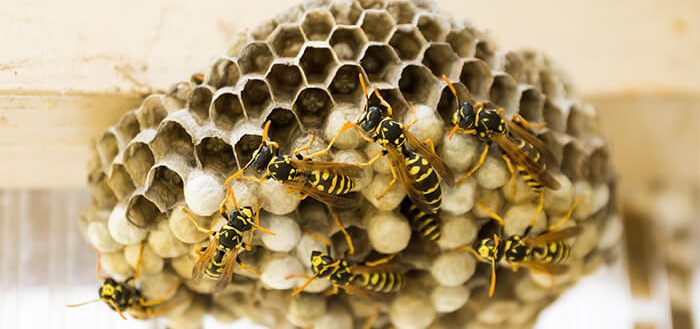Paper wasps (Polistes spp) are little stinging insects (2cm to 3cm in length) that are dark brown, with black wings and yellow markings. They gather fibres from dead wood and plant stems, which when mixed with their saliva, is used to construct nests. The nests are water resistant and are grey or brown. They create unique designs, and there is a variety of wasps called umbrella wasps because of the design of their nests.
Economic Importance of Paper Wasps
Paper wasps love nectar and pollen, but they also feed on insects and caterpillars that they use in nourishing their colonies’ larvae. Paper wasps are also useful because they help in pollination when they go to feed on nectar. They are essential for natural biocontrol and reduce pest population by feeding on the larvae of the pests.
Even though they can be helpful, it is dangerous to allow wasps population to grow around the home. They are not naturally aggressive, but stings from paper wasps are extremely painful and can produce harsh irritations, allergies and even fatal anaphylactic reaction in some victims.
Prevention and Control
Paper wasps build their nests on residential homes. Shrubs, grasses, and hedges should regularly be trimmed, and paper wasp nests should be looked out for before picking fruit or flower. Wood fences and deck railings should be treated with repellent oil to stop wasps from using the wood to gather fibres.
If there are signs of paper wasps already in the home or farms, they should be removed. It is dangerous to remove them on your own, as the wasps could grow aggressive and spread to other places or attack you. It is safer and advised to call professional pest control experts to help in removing the nests and disinfecting the area.


